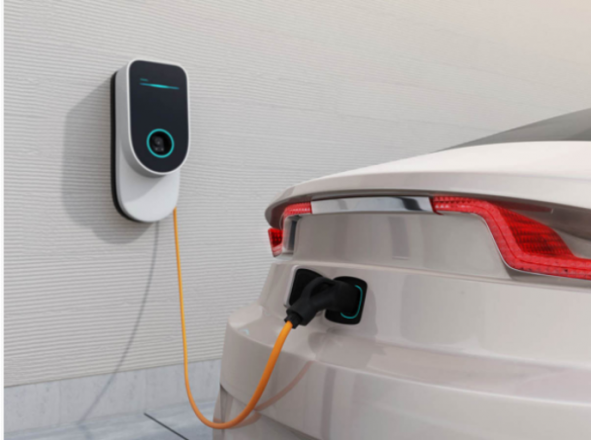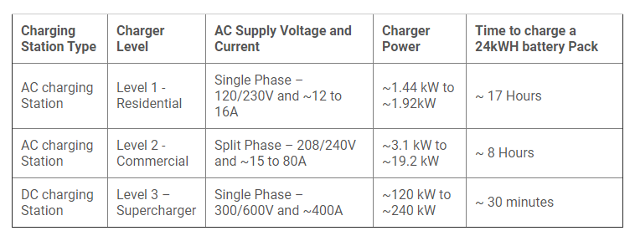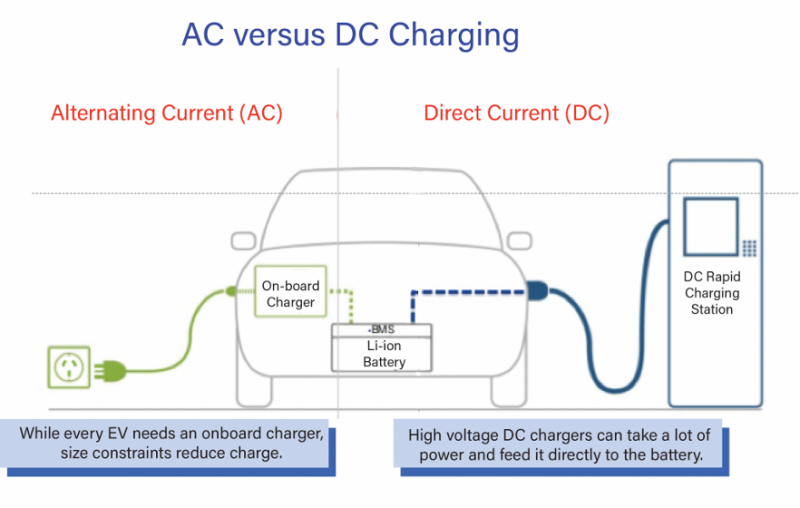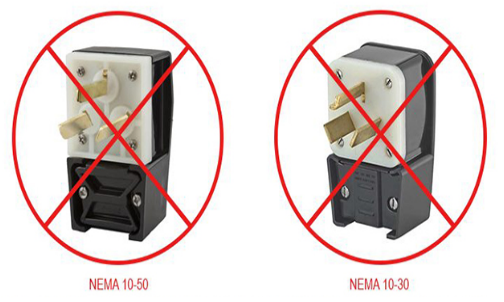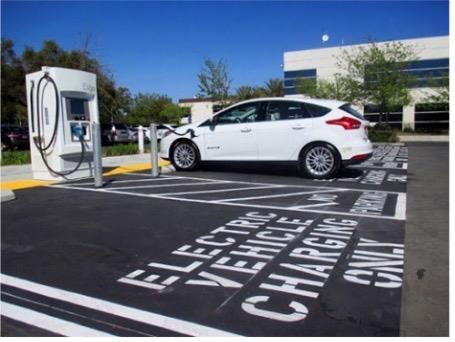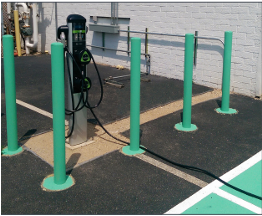What are EV charging stations and how do they work?
An electric vehicle charging station or electric vehicle supply equipment (EVSE) is an electrical power source to which plug-in vehicles connect. The electrical energy is stored in a battery which provides power to the vehicle until the energy is depleted. Electric vehicle charging stations are commonly found at retail buildings, office buildings, all types of parking facilities and even at some coops, condos, and apartment buildings.
Types of Charging Stations
There are three types of charging stations available: Level 1, Level 2, and Level 3. All electrical vehicles come with a cable which connects into an electrical outlet. The charging requirements determine the type of charging station that should be installed.
A standard charging station, whether it is Level 1 (120V) or Level 2 (240V), will provide pass through AC power from the power grid and a safety earth ground to the vehicle for charging. The vehicle converts this AC power to DC power and uses that to recharge the batteries. Though the actual "battery charger" is on the vehicle, an EVSE "charging station" implements several layers of redundant safety features to protect the user from potential electrical and fire hazards while connecting, disconnecting, and charging the vehicle. Once connected to the vehicle, the station informs the vehicle that power is available and at what level. The vehicle then takes over, initiates, and takes full control of the power transfer. If an electrical fault occurs, the station will stop the power transfer immediately and de-energize the cable.
Types of Chargers
LEVEL 1 (120 VOLT CHARGING)
Level 1 is the slowest method but sufficient for drivers who charge overnight and travel 30-40 miles per day. All electric cars come with a cable that can be plugged into a standard wall outlet with no equipment installation required. Level 1 works well at home, work or anywhere - when you have sufficient time to charge. Level 1 charging is ideal for plug in hybrid electric cars that have smaller batteries, but it can suffice for some battery electric car owners as well, depending on their daily range needs and length of time typically parked and charging. Level 1 charging adds about 3.5 - 6.5 miles of driving range per hour of charging time.
LEVEL 2 (220/240 VOLT CHARGING)
Level 2 charging is considerably fast but requires installing a charging station also known as electric vehicle supply equipment (EVSE). Charging station installation requires a dedicated 240-volt or 208-volt electrical circuit, similar to what is required for a clothes dryer or electric range. Level 2 is found at many public and workplace charging stations and in many homes. It uses the same standard connector as Level 1 charging meaning any electric car can plug in at any Level 2 charger. Depending on battery type, charger configuration and circuit capacity, Level 2 charging adds about 14-35 miles of range per hour of charging time.
LEVEL 3 DIRECT CURRENT (DC) FAST CHARGING (480-VOLT CHARGING)
DC fast charging provides the fastest available fill-up. It requires a 480-volt connection making DC fast charging unsuitable for home use and not every electric car model is equipped for it. Stations offering DC fast charging are found in shopping centers and often along major travel corridors, allowing electric car drivers to charge up quickly and take longer trips. DC fast chargers come with a CHAdeMO, Combined Charging System (Combo or CCS) or Tesla connector system. Most DC fast chargers will have both the CHAdeMO and Combo connectors. Depending on the battery type, charger configuration and circuit capacity, DC fast charging can add up to 10 miles of range per minute of charging time.
AC versus DC Charging
Risk Reduction: Best practices for operation and maintenance of the EVSE
Safety Certification: Not all EVSEs available on the market are independently safety tested and certified. To ensure that the products have been properly safety tested, it is important to verify that a Nationally Recognized Testing Laboratory (NRTL) has certified it. Intertek and Underwriter's Laboratory are most common NRTLs in North America that can test and certify EVSEs.
Non-Grounded Plugs: Plug in charging stations with NEMA 10-30 and 10-50 style plugs should not be used as these types of outlets do not have an earth ground connection. EVSEs that use these plugs will not be NRTL safety certified because the absence of proper grounding makes it possible for the vehicle chassis to become electrified and could pose a safety hazard upon contact with the vehicle during or after charging.
Electrical Infrastructure: When installing a charging station, the building's current electrical capabilities may not allow for safe installation of a charger. Additional electrical circuits may be required to handle the increased electrical load.
Location Selection: When selecting an installation site, consider the path of the charging cord when in use so it is not a tripping hazard. When comparing the EVSE models, consider units with the charging cord being mounted 5' or higher to prevent a trip hazard. Some parking lot management questions to consider include:
- Will the EVSE get in the way of pavement cleaning or snow plowing?
- Is it a space where snow is piled in the winter?
- Is equipment stored nearby that might block access to it?
Physical Damage Protection: Most charging station repairs are due to damage from vehicles. Some form of charging station protection should be used to vehicles from hitting the station or snagging the charging cords. Mounting the station above the bumper level on a wall or curb is helpful, but a tire-stop or bollard would provide added protection.
Cord Storage: A common issue involving EVSEs is improperly stored charging cords being damaged by other vehicles. Charging stations with cord retraction systems help alleviate cord damage from vehicles.
Routine Cleaning and Inspection: All charging stations require occasional cleaning and should have the cords inspected once a month and everything wiped down quarterly or monthly depending on use. Snow should be cleared from around the charging station so it can vent properly and be easily accessed.
Electric Vehicle Station Servicing
Any EVSE should be professionally serviced as per manufacturer recommendations. Below is a system inspection process that a typical service technician may follow.
- Perform Visual Inspection - A service technician will inspect the charging station(s) to ensure that all system components are clean and functioning within designed specifications.
- Perform Environment Inspection - A service technician will verify and document that the systems environment is within specified operating conditions.
- Perform Mechanical/Electrical Inspection - A service technician will inspect the charging connections and operational control.
- Implement Updates - A service technician will verify and implement all required Field Advisories and Field Modifications.
- Prepare and Deliver Report - A service technician will describe the current condition and make recommendations for corrective action if required. A detailed report will be provided.
LEVEL 1 OR 2 EVSE MAINTENANCE
- Replacement of charge cord due to vandalism (if not covered under warranty).
- Replacement of EVSE unit at the end of its useful life (industry experts predict a lifespan of 10 years).
- For networked units add:
- Cost of technician troubleshooting (if not covered in network subscription fees)
- Cost of manual resets for software malfunctions
DSFC MAINTENANCE
DC Fast Charging (DCFC) stations require more maintenance, typically, there are relatively few EVSE maintenance requirements:
- It is important to establish a warranty and service plan that fits the machine(s) requirements considering usage and site-specific needs.
- DCFC units require ongoing maintenance because they have cooling systems, filters, and other components that do not exist in Level 1 or Level 2 units.
- In general, the charging cord should be stored securely so it is not damaged, the accessible EVSE parts should be checked periodically for wear and the system should be kept clean,
- See the EVSE manufacturer's guidelines for specific requirements. Periodic inspection, testing, and preventative maintenance by a qualified contractor may be recommended.
Sources Cited
- Here's What You Need to Know About EV Charging Station Safety - chargedevs.com
- Maintenance for EV Charging Stations: What to Know About EV Charger Repair - libertyplugins.com
- Best Practices Guide: Site Owners of Electric Vehicle Charging Stations on Commercial Properties - NYSERDA
- Electric Car Charging Overview - driveclean.ca.gov
- Electric Vehicle (EV) Infrastructure Services - UL.com
- Customer Segments: Energize my eMobility world - new.siemens.com
- Electric Vehicle Charging Infrastructure - mpoweruk.com
- Literature Review Summary: Electric Vehicle Supply Equipment Signage Guidance - Energetics Incorporated
Submitting a Claim to GNY
To submit a claim after a Electric Vehicle Station loss refer to the guides here.
The content herein is for informational purposes only without warranty of any kind, whether express, statutory, or implied, and the information contained herein does not constitute legal advice. You should contact an attorney to obtain advice with respect to any particular issue or problem. Greater New York Mutual Insurance Company and its affiliates assume no liability whatsoever for any errors or omissions in any content contained herein.
